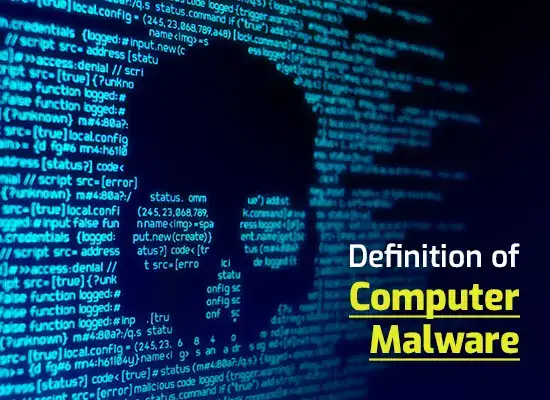
Adopting Dynamic Malware Analysis Tools For Threat Hunting
Updated on October 21, 2022, by Xcitium

Thousands of malware samples proliferate in anti-malware organizations daily. And these vast numbers need analysis. It must go through many practical malware analysis tools. Malware analysis is a vast domain. We can analyze malware in different ways, for example, using dynamic malware analysis tools.
Dynamic Malware Analysis Tools: State of ransomware
Analyzing the runtime behavior of code is dynamic analysis. Dynamic malware analysis tools execute a program in a controlled environment. It produces a report describing the program’s behavior.
Dynamic malware analysis tools determine the motive and usefulness of the malware samples. Malware includes virus, worms, or spyware. Generally, dynamic malware analysis tools are a basic manual process that demands time. It is not a code analysis by reverse engineering malware. A virtual machine is a major aspect of dynamic malware analysis tools.
Dynamic malware analysis tools provide the general malware highlights found in ongoing malware. It uses a sandbox. Dynamic malware analysis tools provide very controlled conditions. Sandbox is a particular case of virtualization. Sandboxing tests unconfirmed programs that may contain different malicious code. Sandboxing does not enable the software to harm the host device.
Dynamic malware analysis tools involve the execution of a binary. It must be in a safe environment. Dynamic malware analysis tools also involve observing the program’s execution. It then produces an analysis report outlining the behavior of the program. Dynamic malware analysis tools are also useful. It is handy for executing a packed binary in the wake of unpacking it.
Yet, there is a danger of using dynamic malware analysis tools. It can harm the entire framework or can block the total network so there is a need to deal with it. Dynamic malware analysis tools involve different types of techniques which feature its quality.
In view of suspicious features, binary needs to execute for a shorter or longer time. After dynamic malware analysis tools, extraction is the main concern. Organizations want to distinguish unknown hashes later on and plan them to cluster. So the rationale is removing the highlights lying in malware.
Using dynamic malware analysis tools, malware enters a controlled environment. Dynamic malware analysis tools screen its runtime behavior. This is to analyze malicious behavior. Dynamic malware analysis tools dodge the restrictions that come with static analysis. For example, issues identified with obfuscation and unpacking.
The two ways for dynamic malware analysis tools are as follows:
COMPARATIVE APPROACH
A malware sample’s execution is for a specific time. Changes made in the system compare with the previous state of the system. So, this method gives a correlation report which expresses the behavior of malware.
RUNTIME BEHAVIOR ANALYSIS
Here we use tools for observing the malicious activities made during runtime. It includes Registry changes, File System changes, and Network changes. The very intriguing parameter for analyzing the malware is operating system services.
Malware analysts aim to provide insight. They have performed complete reviews of the latest dynamic malware analysis tools. It demonstrates the advantages and disadvantages of dynamic malware analysis tools.
Additionally, malware analysts have discovered a few deficiencies and challenges. There are also several possible answers to address the present inadequacies. It is important to understand the patterns and qualities of different malware behaviors. Through that, malware analysts can promote the improvement of dynamic malware analysis tools.
There are some strategies you can try in order to battle malware. These include the use of examining devices like Xcitium Forensic Analysis Tool.
It is advisable to use the free Forensic Analysis Tool from Xcitium Cybersecurity as it has a default deny approach that renders dangers futile. You will be able to shield each endpoint from cyberattacks, data breaches, and more. Aside from this, Xcitium Forensic Analysis Tool doesn’t need any updates.
Xcitium Forensic Analysis Tool finds known bad, good, and unknown files. Xcitium Forensic Analysis Tool also finishes every filtering procedure. You will receive a thorough forensic analysis summary report. All the unknown files go through the Xcitium cloud-based file analysis platform. Valkyrie assesses these files and returns a verdict of “bad” or “good” on every single unknown file.
Xcitium Forensic Analysis Tool might label a file as unknown. The file gets transferred to Xcitium Valkyrie servers. The Valkyrie service runs these files through an array of tests. These tests analyze the behaviors of all files. A report of these tests will be accessible on an interface.
Pretty much every other day, cybercriminals are launching dangers. The main answer to handle and prevent such dangers is by using Xcitium Forensic Analysis Tool. Download and use Xcitium Forensic Analysis Tool to ensure your protection.
Don’t let your guard down. Set up your defenses. Run Xcitium Forensic Analysis Tool scan today at https://enterprise.xcitium.com/
Be sure that your hardware isn’t one of those tainted with malware. Start with a malware discovery. Don’t be one of those gadgets unchecked by Xcitium Forensic Analysis Tool.
Dynamic Malware Analysis Tools: ARE YOU UNSURE ABOUT YOUR SECURITY BLOCKING RANSOMWARE?
Related Resources






